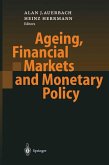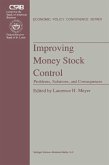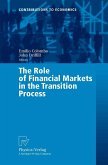Lars Oxelheim
International Financial Integration (eBook, PDF)
72,95 €
72,95 €
inkl. MwSt.
Sofort per Download lieferbar

36 °P sammeln
72,95 €
Als Download kaufen

72,95 €
inkl. MwSt.
Sofort per Download lieferbar

36 °P sammeln
Jetzt verschenken
Alle Infos zum eBook verschenken
72,95 €
inkl. MwSt.
Sofort per Download lieferbar
Alle Infos zum eBook verschenken

36 °P sammeln
Lars Oxelheim
International Financial Integration (eBook, PDF)
- Format: PDF
- Merkliste
- Auf die Merkliste
- Bewerten Bewerten
- Teilen
- Produkt teilen
- Produkterinnerung
- Produkterinnerung

Bitte loggen Sie sich zunächst in Ihr Kundenkonto ein oder registrieren Sie sich bei
bücher.de, um das eBook-Abo tolino select nutzen zu können.
Hier können Sie sich einloggen
Hier können Sie sich einloggen
Sie sind bereits eingeloggt. Klicken Sie auf 2. tolino select Abo, um fortzufahren.

Bitte loggen Sie sich zunächst in Ihr Kundenkonto ein oder registrieren Sie sich bei bücher.de, um das eBook-Abo tolino select nutzen zu können.
In this comprehensive investigation Lars Oxelheim describes how financial markets in individual countries are steered by the events on the world market. The book is an important document of practical value for decision-makers in corporations, banks as well as in the political world. By elaborating the concept of financial integration and alternative ways of measuring the level of this integration, this study is also of great academic interest.
- Geräte: PC
- ohne Kopierschutz
- eBook Hilfe
- Größe: 37.03MB
Andere Kunden interessierten sich auch für
![Competitiveness in Banking (eBook, PDF) Competitiveness in Banking (eBook, PDF)]() Competitiveness in Banking (eBook, PDF)72,95 €
Competitiveness in Banking (eBook, PDF)72,95 €![The Asian Financial Crisis: Origins, Implications, and Solutions (eBook, PDF) The Asian Financial Crisis: Origins, Implications, and Solutions (eBook, PDF)]() The Asian Financial Crisis: Origins, Implications, and Solutions (eBook, PDF)160,95 €
The Asian Financial Crisis: Origins, Implications, and Solutions (eBook, PDF)160,95 €![Ageing, Financial Markets and Monetary Policy (eBook, PDF) Ageing, Financial Markets and Monetary Policy (eBook, PDF)]() Ageing, Financial Markets and Monetary Policy (eBook, PDF)112,95 €
Ageing, Financial Markets and Monetary Policy (eBook, PDF)112,95 €![Improving Money Stock Control (eBook, PDF) Improving Money Stock Control (eBook, PDF)]() L. H. MeyerImproving Money Stock Control (eBook, PDF)40,95 €
L. H. MeyerImproving Money Stock Control (eBook, PDF)40,95 €![The Role of Financial Markets in the Transition Process (eBook, PDF) The Role of Financial Markets in the Transition Process (eBook, PDF)]() The Role of Financial Markets in the Transition Process (eBook, PDF)40,95 €
The Role of Financial Markets in the Transition Process (eBook, PDF)40,95 €![Europe between East and South (eBook, PDF) Europe between East and South (eBook, PDF)]() Europe between East and South (eBook, PDF)72,95 €
Europe between East and South (eBook, PDF)72,95 €![Unknowledge and Choice in Economics (eBook, PDF) Unknowledge and Choice in Economics (eBook, PDF)]() Stephen F. FrowenUnknowledge and Choice in Economics (eBook, PDF)52,95 €
Stephen F. FrowenUnknowledge and Choice in Economics (eBook, PDF)52,95 €-
-
-
In this comprehensive investigation Lars Oxelheim describes how financial markets in individual countries are steered by the events on the world market. The book is an important document of practical value for decision-makers in corporations, banks as well as in the political world. By elaborating the concept of financial integration and alternative ways of measuring the level of this integration, this study is also of great academic interest.
Dieser Download kann aus rechtlichen Gründen nur mit Rechnungsadresse in A, B, BG, CY, CZ, D, DK, EW, E, FIN, F, GR, HR, H, IRL, I, LT, L, LR, M, NL, PL, P, R, S, SLO, SK ausgeliefert werden.
Produktdetails
- Produktdetails
- Verlag: Springer Berlin Heidelberg
- Seitenzahl: 389
- Erscheinungstermin: 6. Dezember 2012
- Englisch
- ISBN-13: 9783642612930
- Artikelnr.: 53088762
- Verlag: Springer Berlin Heidelberg
- Seitenzahl: 389
- Erscheinungstermin: 6. Dezember 2012
- Englisch
- ISBN-13: 9783642612930
- Artikelnr.: 53088762
- Herstellerkennzeichnung Die Herstellerinformationen sind derzeit nicht verfügbar.
In this comprehensive investigation Lars Oxelheim describes how financial markets in individual countries are steered by the events on the world market. The book is an important document of practical value for decision-makers in corporations, banks as well as in the political world. By elaborating the concept of financial integration and alternative ways of measuring the level of this integration, this study is also of great academic interest.
1 The Global Interdependence of National Financial Markets.- 1.1 Many signs of increasing market integration.- 1.2 Previous integration studies demonstrate difficulties in measurement and interpretation.- 1.3 The aim is to measure the level of financial integration.- 1.4 Different forms of financial integration.- 1.5 Interest rate differential or capital flow as dependent variable?.- 1.6 What types of interest rate are relevant to an analysis of financial integration?.- 1.7 What interest rates are the "leaders", as the influence of the US rate declines?.- 1.8 Why is the level of financial integration interesting in a macro-perspective?.- 1.9 What is the significance of the level of financial integration in a micro or corporate perspective?.- 1.10 Is the interest rate in a small open economy determined on foreign markets?.- 1.11 Growing uncertainty raises demands for higher risk premiums.- 1.12 The internationalization of trade.- 1.13 The internationalization of financing.- 1.14 The internationalization of production.- 1.15 Design of the analysis.- 1.16 Plan of the book.- 2 What Is Financial Integration, and Can It Be Measured?.- 2.1 Introduction.- 2.2 Are interest rates determined at home or abroad?.- 2.3 Capital flows and the links between markets.- 2.4 Exchange rate determinants and market expectations.- 2.5 Transaction costs and different types of risk premium.- 2.6 The link between risk and return.- 2.7 Financial integration and monetary autonomy - some measures and analytical approaches.- 2.8 Applied definition and the choice of model.- 2.9 Disintegration and monetary autonomy by way of controls.- 2.10 Problems of measurement and standardization.- 2.11 Collecting primary data.- 2.12 Concluding comment on the methodological problems.- 2.1 Fisher (Domestic)Effect.- 2.2 Variability in interest rates after tax.- 2.3 The International Fisher Effect.- 2.4 Model for determining the exchange rate.- 2.5 Example of a portfolio approach.- 2.6 The interest rate parity theory.- 2.7 Swedish industrial groups with a turnover exceeding SEK 1 billion in 1981.- 3 Results and Findings from Earlier Studies of Financial Integration.- 3.1 Introduction.- 3.2 Studies of the interest-sensitivity of capital flows.- 3.3 Equal expected returns as an indicator of direct financial integration.- 3.4 Observations from the literature - a summary.- 3.1 Adjusting portfolios in an open economy.- 4 Characteristic Features of the Financial Market in a Small Open Economy - the Case of Sweden.- 4.1 Introduction.- 4.2 Actors on the Swedish financial market.- 4.3 Rates of interest and administrative control mechanisms.- 4.4 Swedish exchange controls and their effect on segmentation.- 4.5 The Swedish krona - historical exchange rate patterns and the formation of expectations on the market.- 4.6 Specific measurement problems.- 4.1 Date of abolition of monetary policy regulations, 1978-85.- 4.2 Exchange rate index.- 4.3 Standard deviations in the forward and spot rates.- 4.4 Foreign exchange flows 1974-84.- 4.5 Current account reporting according to SCB.- 5 Fluctuations in Swedish Interest Rates - Historical Patterns.- 5.1 Introduction.- 5.2 Nominal and real Swedish interest rates 1974-84.- 5.3 Correlation between successive quotations of Swedish interest rates.- 5.4 The interest rate pattern and direct financial integration.- 6 Swedish Interest Rate Fluctuations in an International Perspective.- 6.1 Introduction.- 6.2 How Swedish nominal interest rates deviate from foreign interest rates.- 6.3 Deviations of Swedish real interest rates from foreignreal interest rates.- 6.4 What does this initial comparison suggest about financial integration?.- 7 Swedish Interest Rate Dependence: A Correlation Analysis.- 7.1 Introduction.- 7.2 Covariation between Swedish and foreign real interest rates.- 7.3 Covariation between the Swedish nominal interest rate and the foreign rate.- 7.4 Covariation between the Swedish interest rate and the forward-covered foreign interest rate.- 7.5 The correlation analysis and direct financial integration.- 8 A Model-Based Analysis of Direct Financial Integration.- 8.1 Introduction.- 8.2 Analysis of deviations from the International Fisher Effect.- 8.3 Analysis of deviations from interest rate parity.- 8.4 The forward rate as an unbiased estimate of the future exchange rate.- 8.5 Presentation of the model.- 8.6 Analysis of the gap between Swedish and foreign discount rates.- 8.7 Analysis of the gap between Swedish and foreign interest rates on treasury discount notes.- 8.8 Analysis of the gap between Swedish and foreign prime rates.- 8.9 Analysis of the gap between the Swedish interest rate on government bonds/government notes and the corresponding foreign rate.- 8.10 Analysis of the gap between Swedish and foreign interest rates on industrial bonds.- 9 Interest Rate Autonomy and the Foreign Dependence of the Swedish Financial Market - A Summary.- Supplement 1 Mean and standard deviation in the international interest rates 1974-84.- Supplement 2 List of variables and abbreviations.
1 The Global Interdependence of National Financial Markets.- 1.1 Many signs of increasing market integration.- 1.2 Previous integration studies demonstrate difficulties in measurement and interpretation.- 1.3 The aim is to measure the level of financial integration.- 1.4 Different forms of financial integration.- 1.5 Interest rate differential or capital flow as dependent variable?.- 1.6 What types of interest rate are relevant to an analysis of financial integration?.- 1.7 What interest rates are the "leaders", as the influence of the US rate declines?.- 1.8 Why is the level of financial integration interesting in a macro-perspective?.- 1.9 What is the significance of the level of financial integration in a micro or corporate perspective?.- 1.10 Is the interest rate in a small open economy determined on foreign markets?.- 1.11 Growing uncertainty raises demands for higher risk premiums.- 1.12 The internationalization of trade.- 1.13 The internationalization of financing.- 1.14 The internationalization of production.- 1.15 Design of the analysis.- 1.16 Plan of the book.- 2 What Is Financial Integration, and Can It Be Measured?.- 2.1 Introduction.- 2.2 Are interest rates determined at home or abroad?.- 2.3 Capital flows and the links between markets.- 2.4 Exchange rate determinants and market expectations.- 2.5 Transaction costs and different types of risk premium.- 2.6 The link between risk and return.- 2.7 Financial integration and monetary autonomy - some measures and analytical approaches.- 2.8 Applied definition and the choice of model.- 2.9 Disintegration and monetary autonomy by way of controls.- 2.10 Problems of measurement and standardization.- 2.11 Collecting primary data.- 2.12 Concluding comment on the methodological problems.- 2.1 Fisher (Domestic)Effect.- 2.2 Variability in interest rates after tax.- 2.3 The International Fisher Effect.- 2.4 Model for determining the exchange rate.- 2.5 Example of a portfolio approach.- 2.6 The interest rate parity theory.- 2.7 Swedish industrial groups with a turnover exceeding SEK 1 billion in 1981.- 3 Results and Findings from Earlier Studies of Financial Integration.- 3.1 Introduction.- 3.2 Studies of the interest-sensitivity of capital flows.- 3.3 Equal expected returns as an indicator of direct financial integration.- 3.4 Observations from the literature - a summary.- 3.1 Adjusting portfolios in an open economy.- 4 Characteristic Features of the Financial Market in a Small Open Economy - the Case of Sweden.- 4.1 Introduction.- 4.2 Actors on the Swedish financial market.- 4.3 Rates of interest and administrative control mechanisms.- 4.4 Swedish exchange controls and their effect on segmentation.- 4.5 The Swedish krona - historical exchange rate patterns and the formation of expectations on the market.- 4.6 Specific measurement problems.- 4.1 Date of abolition of monetary policy regulations, 1978-85.- 4.2 Exchange rate index.- 4.3 Standard deviations in the forward and spot rates.- 4.4 Foreign exchange flows 1974-84.- 4.5 Current account reporting according to SCB.- 5 Fluctuations in Swedish Interest Rates - Historical Patterns.- 5.1 Introduction.- 5.2 Nominal and real Swedish interest rates 1974-84.- 5.3 Correlation between successive quotations of Swedish interest rates.- 5.4 The interest rate pattern and direct financial integration.- 6 Swedish Interest Rate Fluctuations in an International Perspective.- 6.1 Introduction.- 6.2 How Swedish nominal interest rates deviate from foreign interest rates.- 6.3 Deviations of Swedish real interest rates from foreignreal interest rates.- 6.4 What does this initial comparison suggest about financial integration?.- 7 Swedish Interest Rate Dependence: A Correlation Analysis.- 7.1 Introduction.- 7.2 Covariation between Swedish and foreign real interest rates.- 7.3 Covariation between the Swedish nominal interest rate and the foreign rate.- 7.4 Covariation between the Swedish interest rate and the forward-covered foreign interest rate.- 7.5 The correlation analysis and direct financial integration.- 8 A Model-Based Analysis of Direct Financial Integration.- 8.1 Introduction.- 8.2 Analysis of deviations from the International Fisher Effect.- 8.3 Analysis of deviations from interest rate parity.- 8.4 The forward rate as an unbiased estimate of the future exchange rate.- 8.5 Presentation of the model.- 8.6 Analysis of the gap between Swedish and foreign discount rates.- 8.7 Analysis of the gap between Swedish and foreign interest rates on treasury discount notes.- 8.8 Analysis of the gap between Swedish and foreign prime rates.- 8.9 Analysis of the gap between the Swedish interest rate on government bonds/government notes and the corresponding foreign rate.- 8.10 Analysis of the gap between Swedish and foreign interest rates on industrial bonds.- 9 Interest Rate Autonomy and the Foreign Dependence of the Swedish Financial Market - A Summary.- Supplement 1 Mean and standard deviation in the international interest rates 1974-84.- Supplement 2 List of variables and abbreviations.







